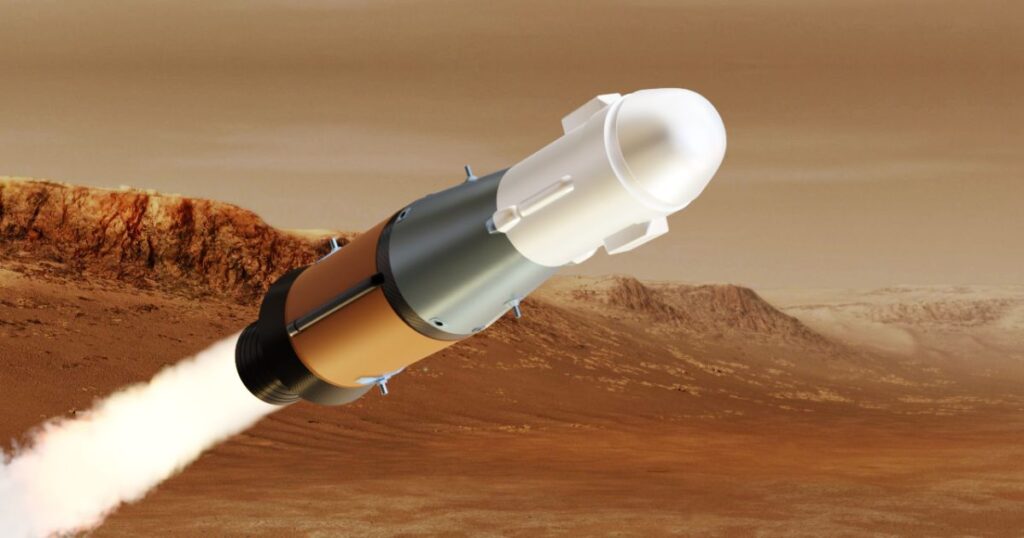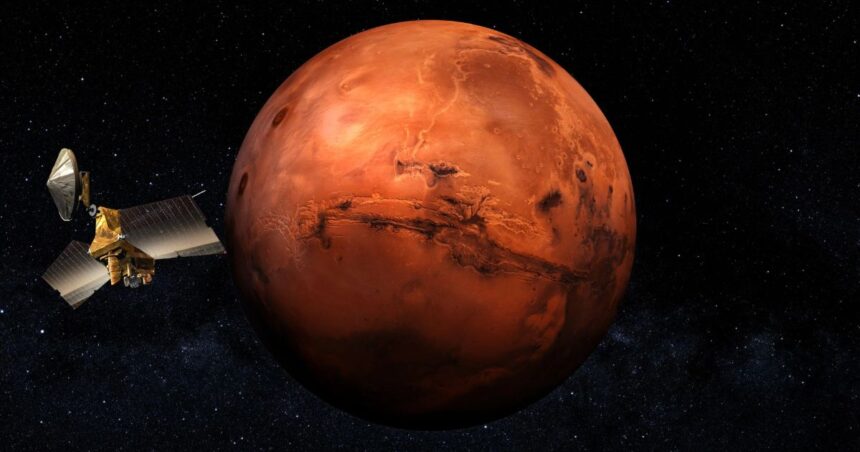China will create a new history. China is going to send a spacecraft to Mars. Recently, China announced that it is ready to launch its ambitious Tianwen-3 mission to Mars in the year 2028 and soil samples is also likely to move ahead to 2031. This mission will bring 600 grams of Martian soil from Mars. This is not the first time that China is planning to go to Mars. In 2021, the lander portion of the mission successfully touched down on Mars.
600 gms of Mars soil
But this time, the country plans to bring 600 gms of Mars soil from return missions. The Tianwen-3 Mission will use two Long March 5 rockets for this mission. These rockets will carry the necessary equipment to Mars.
Tianwen-3 mission includes one lander, an ascent vehicle, an orbiter, and a return module. When the lander lands on Mars, it will collect soil from Mars. After collecting the sand, the ascent vehicle will take off from Mars and dock the orbiter in space. After all this effort, the return model will bring all these soil samples back to Earth.
At the Space Exploration Conference, the Chinese mission’s chief designer, Liu Jizhong, shared all this information about the mission. Chief Designer said that the Tianwen-3 Mission will use the technology of Tianwen-1 used for the Mars landing. The Tianwen-1 mission was successful, and because of this success, China has confidence that Tianwen-3 will be carried out completely.

China has targeted three potential land sites on Mars to land successfully. These sites are Amazonis Planitia, Utopia Planitia, and Chryse Planitia. These areas were chosen for their scientific potential and safety. They have low altitudes, which will help slow the lander’s descent using Mars’ atmosphere.
Life on Mars
The first aim of China’s mission is to find evidence of life on Mars. The mission will focus on areas that may have been suitable for life in the past. This includes places with signs of water activity and geological diversity. The mission will also follow strict planetary protection guidelines to avoid contaminating Mars or Earth.
China has the aim to become the world’s most powerful space country; this mission is part of it. Tianwen-3 is not only about bringing Mars soil to Earth. It is also about advancing China’s space exploration capabilities. The success of the Tianwen-3 mission will be a significant milestone in this journey. If this mission is successful, it will be a huge milestone for China.
Going to Mars is not an easy task; it requires a lot of hard work and to face many challenges. These include landing on Mars, collecting samples, taking off from Mars, and docking in space. Each step requires accurate planning and execution. The scientists team is working hard to make all these things successful.
China’s 2030 plan
The China Mars Mission is part of a broader plan to explore the solar system. China’s space aim is so big that it wants to send astronauts to the moon by 2030. It also aims to build a Moon base called the International Lunar Research Station. In addition, they want to explore other planets, including Jupiter and asteroids.
NASA’s Perseverance rover on Mars has also been planned to send Mars soil samples to Earth, but they have not been successful so far. China has seen a ray of hope in this failure of NASA because if China succeeds in this mission, it will be the first country to bring soil samples from Mars back to Earth.
This new mission from China has aroused curiosity in people’s minds. Scientists and space enthusiasts around the world are eagerly waiting for China’s mission. The mission will provide valuable information on Mars’s history and potential for life.
Editor’s Recommendations
- Andromeda Galaxy’s Rosy Glow, Hubble’s Stunning New Image Revealed
- Latest Findings of JWST Reveals the Secrets of Star Birth at ‘Cosmic Noon’
- Asteroid Bennu Older Than the Sun and a Carrier of Life’s Building Blocks and Water on Earth
- NASA’s Europa Clipper Spacecraft Prepares for Historic Launch, A New Chapter in the Search for Extraterrestrial Life




